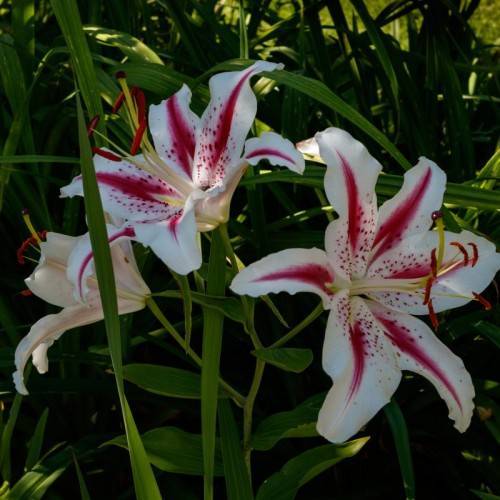
peppermint spider lily
Lycoris incarnata
Cycle:
Perennial
Watering:
Average
Hardiness Zone:
5 - 9
Flowers:
Flowers In Autumn
Sun:
Full sun,part shade
Growth Rate:
Low
Maintenance:
Moderate
Salt Tolerant:
Yes
Care Level:
Medium
watering
The peppermint spider lily is a native plant in East Asia. The plant does best in a sunny location with well-draining soil. It can tolerate partial shade but more sun will increase its flowering. Water the peppermint spider lily deeply but infrequently. During the spring and summer, water the plant every 5–7 days to ensure the soil is kept consistently moist. Allow the soil to dry out slightly between watering. In the fall and winter, reduce watering to every 10–14 days or more, as necessary. Avoid overwatering as this may cause the plant to rot or fade.
sunlight
Peppermint spider lilies, also known as Lycoris incarnata, require 6 to 8 hours of sunlight per day in order to thrive. Ideally, the sun should be fairly evenly distributed throughout the day, so there should not be long periods of uninterrupted afternoon light exposure. During the height of summer, it is best to provide some shade to prevent scorching and desiccation of the leaves. This plant species thrives in warm, sunny climates and requires a protected location in cooler weather. It is recommended that peppermint spider lilies receive light from morning to mid-afternoon, or from mid-morning to mid-afternoon, in order to make sure that the plants get adequate sunlight. Additionally, these plants should receive at least 4 hours of direct sunlight throughout the day.
pruning
Peppermint spider lilies should be pruned after they are done blooming. This typically occurs in the early summer. Pruning can be done by removing the flower stems, but it is recommended to leave the foliage alone to ensure healthy growth for the next season. In addition, dead foliage and stems should be removed anytime throughout the growing season. Pruning will help the plant remain neat and remove any unsightly dead growth.
